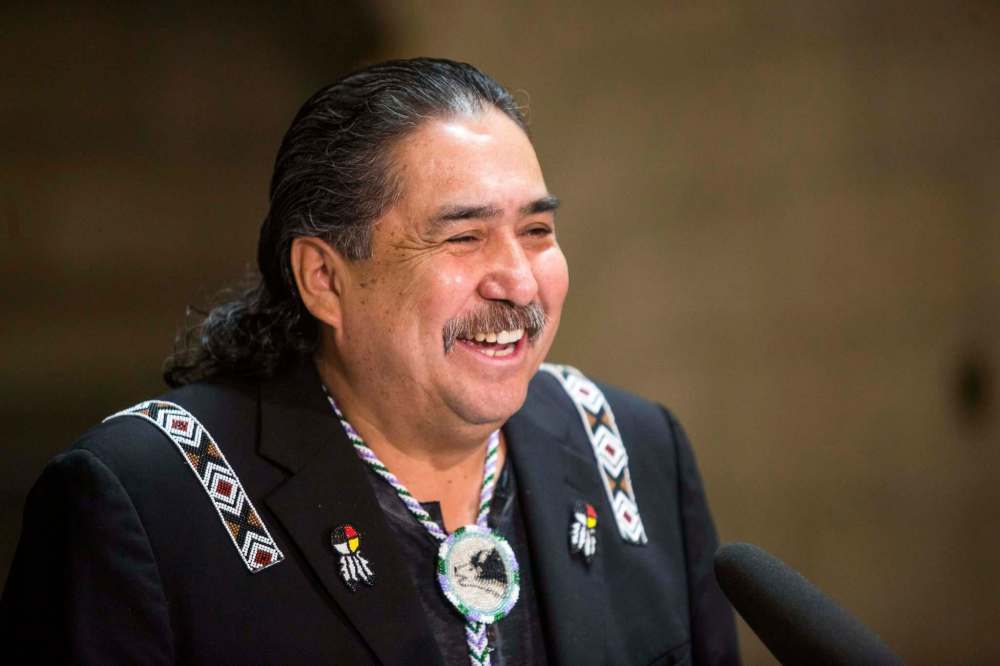Clearing the way for forestry deal
Province, First Nations working toward management licence
Advertisement
Read this article for free:
or
Already have an account? Log in here »
To continue reading, please subscribe:
Monthly Digital Subscription
$1 per week for 24 weeks*
- Enjoy unlimited reading on winnipegfreepress.com
- Read the E-Edition, our digital replica newspaper
- Access News Break, our award-winning app
- Play interactive puzzles
*Billed as $4.00 plus GST every four weeks. After 24 weeks, price increases to the regular rate of $19.00 plus GST every four weeks. Offer available to new and qualified returning subscribers only. Cancel any time.
Monthly Digital Subscription
$4.75/week*
- Enjoy unlimited reading on winnipegfreepress.com
- Read the E-Edition, our digital replica newspaper
- Access News Break, our award-winning app
- Play interactive puzzles
*Billed as $19 plus GST every four weeks. Cancel any time.
To continue reading, please subscribe:
Add Free Press access to your Brandon Sun subscription for only an additional
$1 for the first 4 weeks*
*Your next subscription payment will increase by $1.00 and you will be charged $16.99 plus GST for four weeks. After four weeks, your payment will increase to $23.99 plus GST every four weeks.
Read unlimited articles for free today:
or
Already have an account? Log in here »
Hey there, time traveller!
This article was published 01/03/2019 (2436 days ago), so information in it may no longer be current.
For the first time ever, the province has signed a forestry-option licence with a First Nations group, giving them two years to set up a business plan that would lead to a forestry-management licence and the possibility of creating major new economic activity in the province.
The agreement, announced Thursday, is for about 5,000 square kilometres of land on the east side of Lake Winnipeg and northeast of the Winnipeg River, much of which was used for harvesting when Tembec ran the Pine Falls paper mill.
But since that plant closed in late 2009, no forestry-industry activity has taken place there and the province has not issued any forestry-management licences on the east side of the province.

A consortium of four First Nations — Black River First Nation, Brokenhead Ojibway Nation, Hollow Water First Nation and Sagkeeng First Nation — now has two years to conduct an inventory to determine what sort of wood supply exists and create a business plan.
At this point, Chief Sheldon Kent of Black River said there are all sorts of options as to what sort of industry might be created with the timber in the region. He said everything from a sawmill, oriented strand board plant, biodiesel production and cross-laminated timber plant are being considered.
“We’ll do an inventory of the forest and see what kind of trees are there and that will determine what kind of business we will create,” Kent said.
While there is still a lot of work to do, Kent said the thinking is that over time, the enterprise could create as many as 1,000 jobs. Terry Brown, a consultant with Legacy Bowes who has been working with the First Nations on the project for almost five years, said what is being imagined will take anywhere from $150 million to $500 million of capital investment to build.
The four First Nations initially met with the province almost two years ago. Kent said ever since the paper mill closed — eliminating 300 full-time jobs and another 500 indirect jobs — they have been looking at getting into the business.
Sustainable Development Minister Rochelle Squires said, “We are very excited to be developing forest-management plans with Indigenous partners. This is something that is an aspect of reconciliation in Manitoba — giving them the autonomy to create economic-development opportunities in their traditional territory.”
The plan that the consortium will eventually submit for the forestry-management licence will have to include sustainable forestry-management practices like reforestation and show that there will be value for the province.
The area involved does not include provincial park land or the Pimachiowin Aki world heritage site.
Once the plan is submitted, it will then have to undergo an environmental assessment and other regulatory clearance processes. No trees will be harvested during the option period and the province would only start to earn revenue when the full licence is granted.
Kent, as well as Larry Barker, chief of Hollow Water First Nation, said the Indigenous people in the area have plenty of history and expertise in the forestry sector.
They have already met with industry players and said they may or may not bring on forestry-industry partners for the project.
The Economic Development Council for Manitoba Bilingual Municipalities has been working with the First Nations on this initiative for three years, chairman Edmond LaBossière said.
“We are pleased to support this historic partnership and promote the economic development of a region in which the First Nations are providing outstanding leadership,” he said.
Three of the four bands are already partners in the South Beach Casino in Scanterbury (Sagkeeng is the exception) and Kent said they have come to understand that working together provides greater opportunity.
“What we have learned as a collective is that we have more strength, more banking power,” he said.
“We can use our leverage with gaming revenue if we need to, but I don’t think we will. The forestry licence itself will have a lot of value.”
martin.cash@freepress.mb.ca
History
Updated on Friday, March 1, 2019 6:51 AM CST: Photo added.

